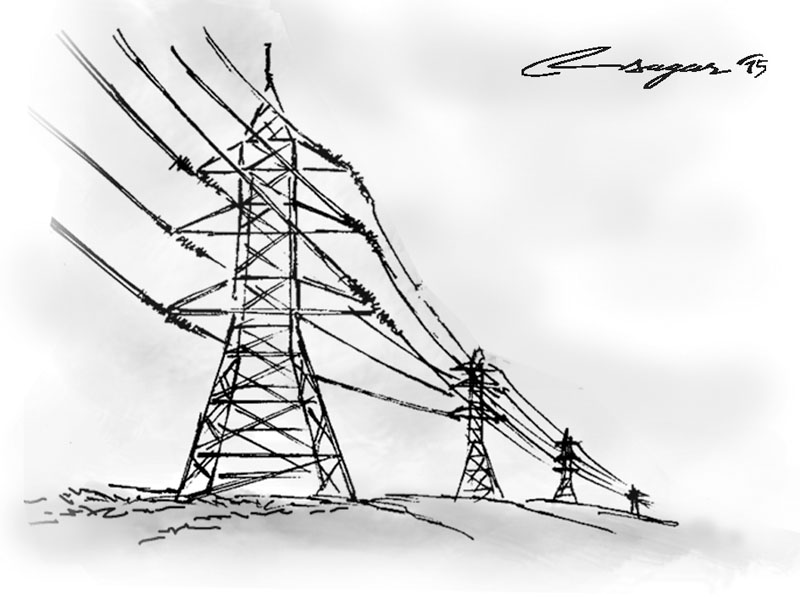NEA to bring imported power to Kathmandu
Kathmandu, January 7
In line with its plan to import additional 40 megawatts of electricity through Muzaffarpur-Dhalkebar cross border transmission line from February, Nepal Electricity Authority (NEA) has quickened the pace of putting in place necessary safety measures in transmission lines to transfer the imported power to Kathmandu Valley.
NEA is gearing up to bring the imported power to Kathmandu — the major load centre of the country — as two critical transmission infrastructure, namely, Hetauda-Matatirtha-Syuchatar transmission line and Dhalkebar-Hetauda-Lamusanghu-Bhaktapur transmission line are expected to commence operation within two weeks.
After the completion of these two projects, NEA will be able to bring the power imported from India to Kathmandu, according to Prabal Adhikari, chief of the Power Trade Department of NEA.
“In the long run, we plan to synchronise the power grids of India and Nepal,” he informed, adding that NEA would be able to bring up to 90 MW via Dhalkebar-Hetauda-Lamusanghu-Bhaktapur transmission line after installing necessary safety measures that will prevent the power system from collapsing in case of any glitches.
Currently, NEA has been importing 120 MW via Muzaffarpur-Dhalkebar cross-border transmission line. The additional 40 MW will be added from February as per the power purchase agreement between NEA and Indian government’s NTPC Vidyut Vyapar Nigam (NVVN), a wholly owned subsidiary of India’s state-owned NTPC.
NEA signed agreement with NVVN to import additional 80 MW power recently, of which 40 MW has been supplied from January 1 and NEA has been distributing that quantum of electricity to Hetauda region since the start of the New Year. After starting to supply the imported power to Hetauda region, NEA switched electricity generated from Trishuli (21 MW) and Devighat (14 MW) to Kathmandu, which was being supplied to Hetauda region earlier.
NEA had signed the agreement with NVVN to bring 80 MW additional electricity in two phases due to lack of required infrastructure to distribute power in the country.
“As we are going to import 40 MW from February, we are preparing to transfer that quantum via Dhalkebar-Hetauda-Lamusanghu-Bhaktapur transmission line to Kathmandu,” as per Adhikari.
NEA can also bring electricity imported from India via Hetauda-Matatirtha-Syuchatar transmission to Kathmandu after synchronising the power grid with Indian power grid.
The test operation of the Hetauda-Matatirtha section of the project has already been carried out, and this transmission line will come into full-fledged operation after the roof lines of five houses that fall on the right of way from Matatirtha to Syuchatar are lowered, as per Adhikari.
“Completion of Dhalkebar-Hetauda-Lamusanghu-Bhaktapur transmission line project is also in the last leg and is expected to be completed within two weeks.”
Dhalkebar-Hetauda-Lamusanghu-Bhaktapur transmission is one of the longest running projects — around 14 years — being implemented by NEA.
10,000 transformers to be procured
KATHMANDU: Nepal Electricity Authority (NEA) has started the process of importing 10,000 transformers in a bid to make distribution system robust. The Ministry of Finance has already released an additional budget of Rs 5.37 billion to NEA through Ministry of Energy for the purpose. NEA is preparing to import a large number of transformers eyeing further electrification in the country as around 1,100 MW (456 MW Upper Tamakoshi and remaining from independent power producers) would be added to the national grid by the end of next fiscal 2017-18, as per Prabal Adhikari, chief of the Power Trade Department of NEA. “NEA has also expedited replacing the transformers in Kathmandu Valley to prevent leakage of electricity and build an efficient distribution system.”






